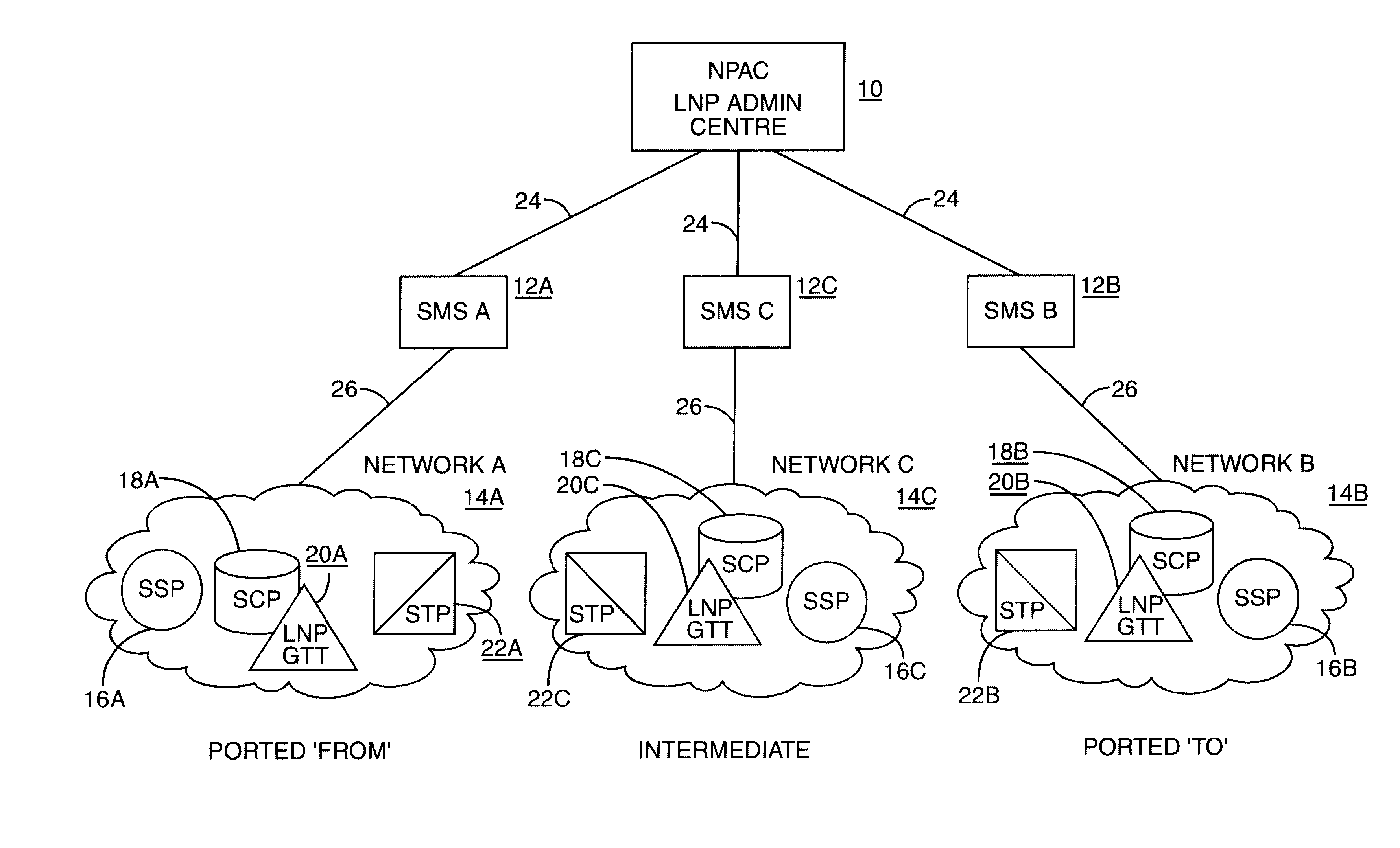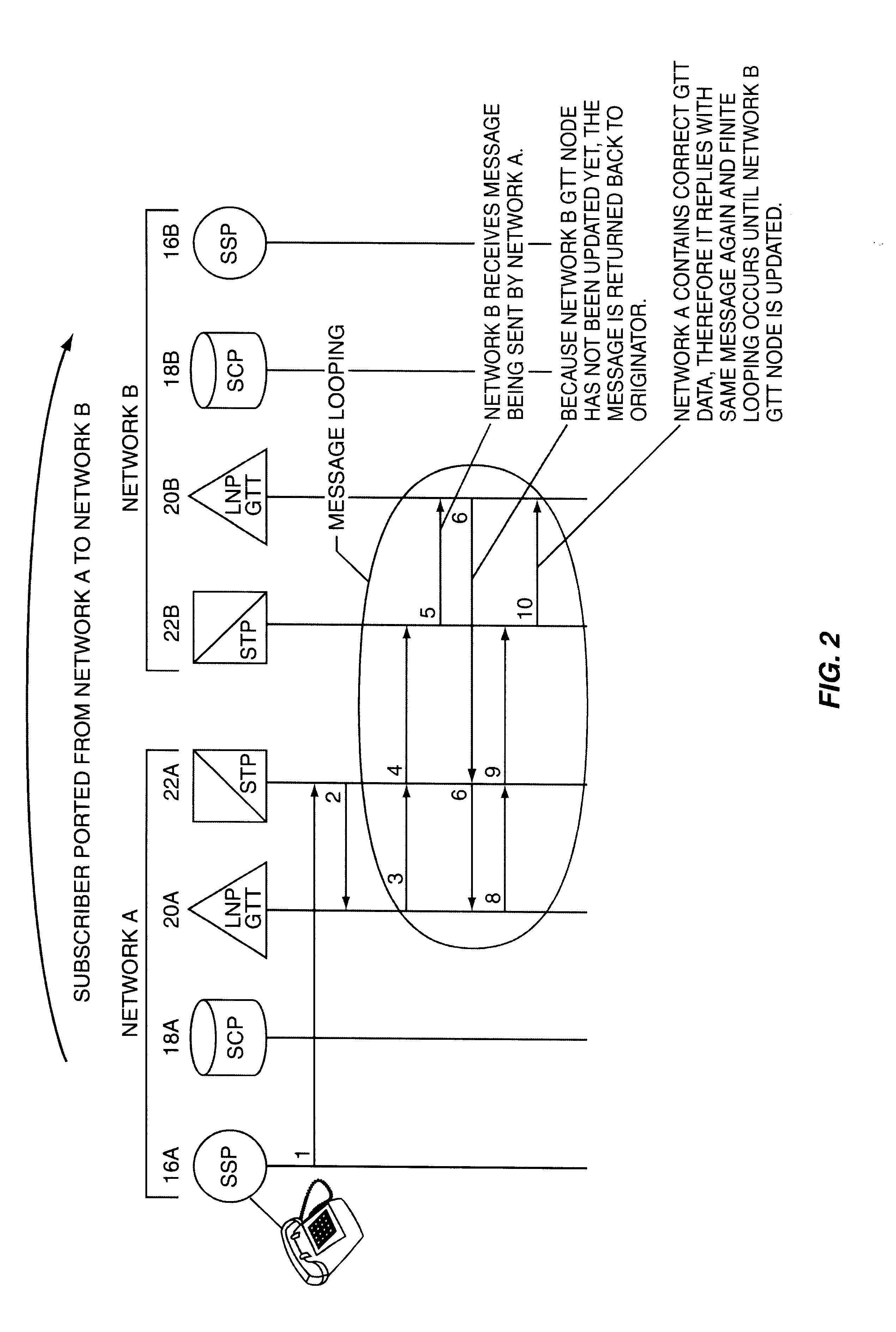Method of provisioning nodes within a communications network
a technology of provisioning nodes and communications networks, applied in the direction of data switching networks, data switching by path configuration, digital transmission, etc., can solve problems such as non-synchronized gtt nodes, network congestion or possibly even network failure of ss7, and achieve the effect of reducing the problem
- Summary
- Abstract
- Description
- Claims
- Application Information
AI Technical Summary
Benefits of technology
Problems solved by technology
Method used
Image
Examples
Embodiment Construction
FIG. 1 illustrates a preliminary proposal by the ICC Workshop on Local Number Portability of an architecture for administrating and monitoring a larger LNP capable network which is comprised of numerous LNP capable Service Provider networks. Three separate service provider networks, Network A, B and C are represented within clouds 14A, 14B, 14C respectively in FIG. 1. Each network comprises well known network functionality such as Service Switching points (SSP) 16A, B, C, Signal Transfer Points (STP) 22A, B, C and Service Control Points (18A, B, C). Included in each of the three Networks 14A, B, C is a LNP GTT function 20A, B, C which although shown separately may be provided by an SCP that also provides the LNP application or the function may reside elsewhere in the network. Each network 14A, B, C is connected over proprietary links 26 to respective local Service Management System (SMS) 12A, B, C which are the operations and support system for Advanced Intelligent Networks (AIN) an...
PUM
 Login to View More
Login to View More Abstract
Description
Claims
Application Information
 Login to View More
Login to View More - R&D
- Intellectual Property
- Life Sciences
- Materials
- Tech Scout
- Unparalleled Data Quality
- Higher Quality Content
- 60% Fewer Hallucinations
Browse by: Latest US Patents, China's latest patents, Technical Efficacy Thesaurus, Application Domain, Technology Topic, Popular Technical Reports.
© 2025 PatSnap. All rights reserved.Legal|Privacy policy|Modern Slavery Act Transparency Statement|Sitemap|About US| Contact US: help@patsnap.com



